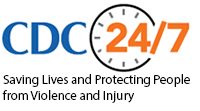27 Aug Illicitly-Manufactured Fentanyl Contributing To Increasing Numbers of Heroin Deaths
MedicalResearch.com Interview with:
John Halpin, MD, MPH, Medical officer
Prescription Drug Overdose Epidemiology and Surveillance Team
CDC Injury Center
MedicalReseach.com editor’s note: Dr. Halpern discusses the CDC alert of August 25, 2016 regarding the increase in fentanyl-related unintentional overdose fatalities in multiple states.
MedicalResearch.com: What is the background for this alert?
Response: The current health alert is an update to a previous alert in October, 2015 from CDC which described the geographic spread of states in which forensic labs were increasingly detecting fentanyl in the drug submissions that they receive from law enforcement, and how many of these same states were beginning to report fentanyl-related overdose deaths by their departments of public health.
Further investigation by CDC and DEA have revealed that the great majority of fentanyl now present in the illicit drugs market is clandestinely-produced, and most commonly mixed with and sold as heroin, and is responsible for the great majority of fentanyl-related overdose deaths. Indications at the time of that alert pointed to a likely continuous rise in the supply of illicitly-manufactured fentanyl, and the potential for increasing numbers of fentanyl-related overdose deaths, particularly among those who use heroin.
MedicalResearch.com: What are the main concerns?
Response: This update was needed for several reasons:
- 1. The appearance of fentanyl and fentanyl-related compounds in counterfeit prescription opioids and sedatives, which now substantially widens the spectrum of those at risk of exposure to fentanyl and risk of fentanyl overdose, both in terms of geographic location, and the type of users now at risk, which now increasingly includes those who misuse prescription opioids and sedatives by purchasing them on the illicit market
- 2. The growing spectrum and increasing potency of fentanyl-related compounds that have been detected in the illicit market, including carfentanil, acetyl fentanyl, furanyl fentanyl, and others.
- 3. The ongoing increase in the supply and distribution of fentanyl and fentanyl-related compounds into 2015.
MedicalResearch.com: What should readers take away from your report?
Response: There are a number of messages to take away that pertain to different audience groups in MMWR’s readership.
- For the general public, we would like to raise awareness of the increasing and widening risk of exposure to fentanyl among heroin users and those who seek prescription pills on the illicit market.
- For public health officials, Medical Examiners and Coroners, and Law Enforcement, we have recommended a variety of mechanisms for improving the detection and surveillance of fentanyl outbreaks, and have included contact information for laboratories that can provide technical assistance with regard to testing of fentanyl products.
- For health care providers and harm reduction organizations, we have highlighted the need to expand the availability and use of Naloxone, an antidote used to reverse opioid overdose, and the potential need to utilize multiple doses of naloxone when fentanyl is involved. We also highlight the importance of facilitating access to medication-assisted treatment for those with opioid use disorders.
MedicalResearch.com: Is there anything else you would like to add?
Response: Probably the single most important point or message to highlight from this update is that the risk of exposure to fentanyl and fentanyl-related compounds has expanded both quantitatively in terms of the volume and toxicity of the product, and qualitatively in terms of the presence of fentanyl in counterfeit prescription pills, which places many more at risk than previously, when fentanyl exposure was primarily confined to those that use heroin.
MedicalResearch.com: Thank you for your contribution to the MedicalResearch.com community.
Citation:
 Distributed via the CDC Health Alert Network
Distributed via the CDC Health Alert Network
August 25, 2016, 15:15 ET
Influx of Fentanyl-laced Counterfeit Pills and Toxic Fentanyl-related Compounds Further Increases Risk of Fentanyl-related Overdose and Fatalities
Note: Content is Not intended as medical advice. Please consult your health care provider regarding your specific medical condition and questions.
More Medical Research Interviews on MedicalResearch.com
[wysija_form id=”5″]
Last Updated on August 27, 2016 by Marie Benz MD FAAD
